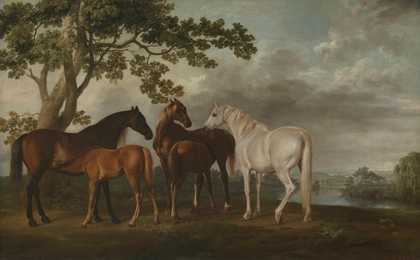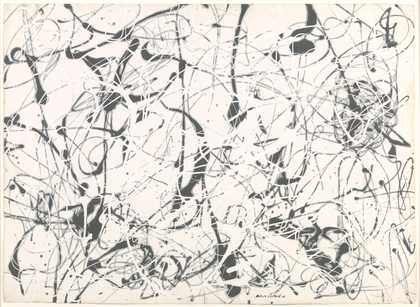
George Stubbs
Mares and Foals in a River Landscape (c.1763–8)
Tate

Jackson Pollock
Number 23 (1948)
Tate
Although in a general sense any piece of music or writing, painting or sculpture, can be referred to as a composition, the term usually refers to the arrangement of elements within a work of art. An artist arranges the different elements of an artwork so as to bring them into a relationship satisfactory to them and, it is hoped, the viewer.
In the classical tradition, triangular or pyramidal compositions were used because they created a sense of balance and harmony by arranging the figures into a stable overall geometric structure. This can be seen for example in the roughly conical grouping of the animals in George Stubbs’s Mares and Foals.
The idea of composition as the adjustment of the relationships of the elements of the work within the border of the canvas, remained unchallenged through the upheavals of the early modern movements such as cubism and abstract art.
Then in the late 1940s the American abstract expressionist painter, Jackson Pollock, introduced what came to be called allover composition, and the traditional concept became known as relational composition. However, Pollock still generally seems to be composing within the canvas. But at the same time, the abstract expressionist Barnett Newman began making paintings in which large blocks of colour ran from top to bottom of the canvas. These were relational to the extent that the proportions of the colours were adjusted against each other, but they were compositionally radical in that the blocks of colour simply ran off the top and bottom edges of the canvas, which Newman deliberately left unframed. It was Frank Stella in the late 1950s who achieved a composition that was both all over and broke out of the confines of the canvas.
